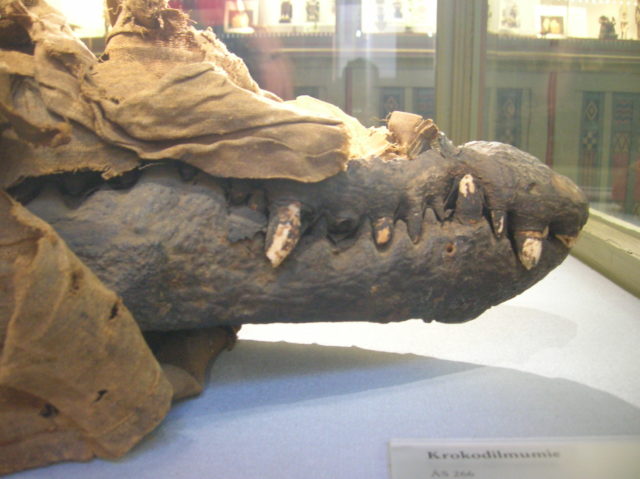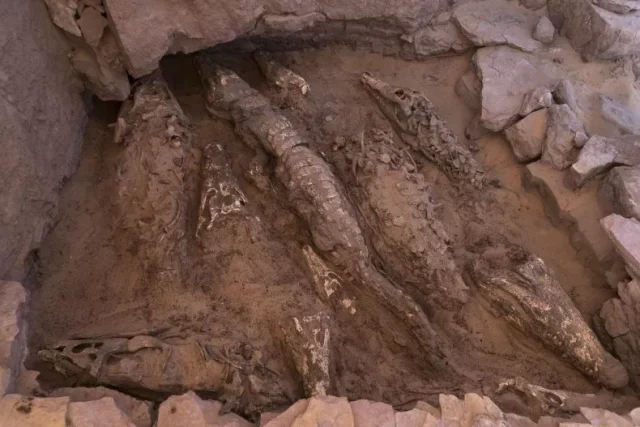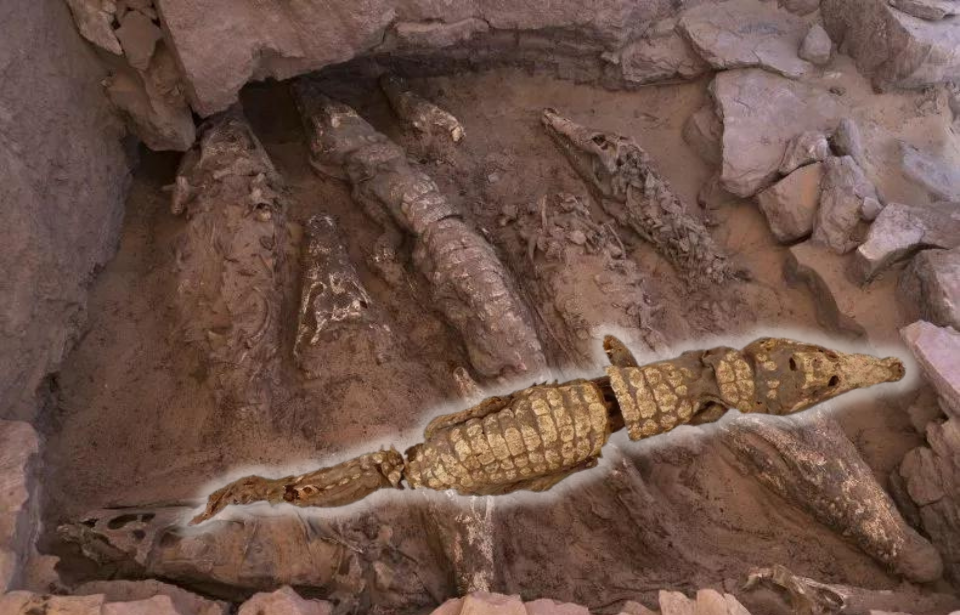While excavating a previously undisturbed ancient Egyptian tomb at Qubbat al-Hawā, archaeologists discovered 10 mummified crocodiles. While it was common for animals – crocodiles included – to be embalmed and buried, there’s something particularly unusual about these; the unique method of mummification has raised many questions among the researchers who found them.
Mummified animals

The practice of mummifying animals was extremely common in ancient Egypt. Animals were revered as both pets and religious symbols, explaining why the effort was made to preserve them.
The primary reasons for mummification were related to Egyptian beliefs surrounding the afterlife. Animals were preserved so an owner could keep one of their favorite pets when they both passed on. Other reasons included the animal being a source of food in the afterlife, being an offering to a specific god or that some creatures were seen as representations of their gods manifested in a physical form.
Crocodiles were one of these animals. The Egyptians would raise them to be honored and doted upon up until their death. At this time, they’d often be mummified to honor the gods Sebek, who appeared as half man, half crocodile, and Re (Ra), the sun god.
Qubbat al-Hawā discovery

The Qubbat al-Hawā archaeological site, located on the Western bank of the Nile, is believed to have been a tomb made for priests or nobles. Excavations began in 2008 on these ruins, which are considered one of the most densely filled cemeteries from ancient Egypt.
The crocodiles were discovered years later, in 2019. Five of them were full mummies, while the other five were decapitated heads. It wasn’t until a 2023 study published in the journal PLOS ONE, titled Newly discovered crocodile mummies of variable quality from an undisturbed tomb at Qubbat al-Hawā (Aswan, Egypt), that researchers came to know more about the discovery.
One of the most interesting observations is that, while most crocodiles were embalmed using linen bandages and bitumen, which limits the ways they can be studied, these 10 were absent of both. This made it far easier to assess various parts of the animals.
Curious crocodiles

After conducting studies, researchers learned that these crocodile mummies were prepared for burial unlike any others that had previously been found. Instead of removing the intestines and embalming the animals with bitumen and linen wrappings, it appears as though they were simply buried in the sunny sand, so they could dry out naturally. Once this process was finished, the crocodiles were wrapped up and placed in the tomb they’d been prepared for.
These are all clues as to the age of the creatures, which have been dated to before 300 BCE, during the Ptolemaic age. It’s believed the crocodiles were large, between 5.9-11.5 feet, according to their bone length. Not only is their embalming unusual, but some of the mummies were also West African crocodiles, which no longer exist in Egypt.
One mystery that remains is how these creatures were killed, as there are no obvious signs that provide an answer.
More from us: This 2,200 Year Old Mummy is So Well Preserved There’s Still Blood in Its Veins
Above all else, the researchers working with these crocodiles believe that this incredible discovery will help them piece together how animal mummification changed over time.
